
Gumpalia
Today I was scheduled for Gumpalia village with Indra Sherma’s Team.
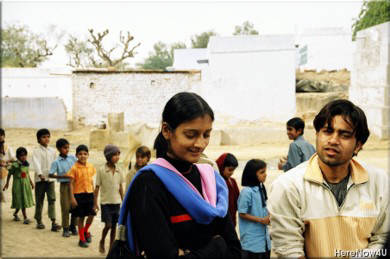
Indra Sherma and team member
This is a bigger village than the others I have seen so far, 86 houses and somewhat more developed, some of the farmers have tractors and some of the houses are quite big and modern. Nevertheless, the situation is not much different from the other villages, open air sewage, no rubbish collection and only one harvest a year during the monsoon season when there is plenty of rain. The social workers however have managed to introduce some changes and the sewage is being drained away from the houses by channels dug on the streets and all rubbish is being taken to an open area and burned afterwards. When not occupied with the fields the men use to gather around to play cards while the women are in charge of house keeping. We were gifted with a special event in Gumpalia, a duet of musicians. He played the “violin”, a self made instrument, and sang beautiful songs in duet with his wife. This is how he earns his life, travelling around and playing, and I guess it is not easy to be a musician and keep a family of four on such a place. Everybody on the team contributed for the beautiful performance. I regretted very much not having my camera on this occasion!
Dujar
The last village I have visited was Dujar, with Krishna Shekhawat’s Team.
As soon as we arrived we were offered a hot cup of tea with instant taken goat’s milk, and brewed in the kitchen of the social centre.
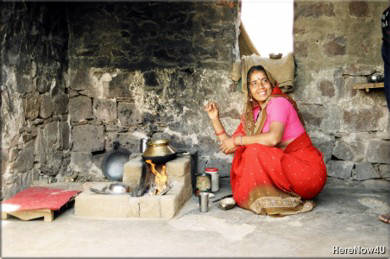
Brewing tea at Dujar village
Although only a few kilometres distant from the other villages, Dujar is green because it has plenty of WATER! As a result the life standard is far much higher, the houses are better built, the people looks healthier and one can notice less poverty around.

A Dujar farm
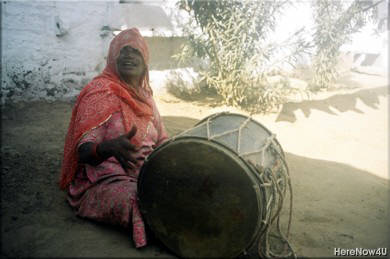
We were invited to one of the houses where a local musician played her drum and sang folk songs while we were offered a tray of delicious typical sweets of Rajasthan.
Drum player at Dujar
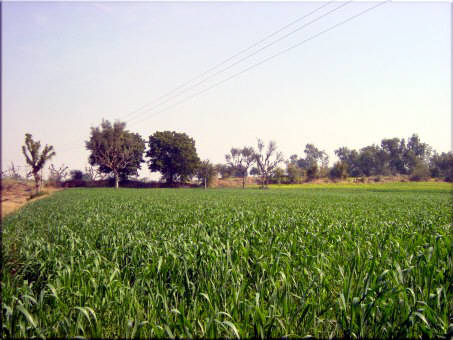
We could also taste the hospitality of many farms around and saw the difference of having water, a precious commodity here. On one of them they offered us carrots, beans and other vegetables together with lassi, made from buffalo milk.
Dujar produce
We also visited the local temple, the civic centre where the youngsters gather to play and a small library with books and magazines.
On another farm, whose owner worked in Italy for a long time and could speak very good English, we were given a lesson on the agricultural techniques employed here, including the use of vegetable waste to produce compost. His only complaint being that there is no full time electricity available to operate his pumps and irrigate his fields; otherwise he could have an even bigger and varied harvest and production output.
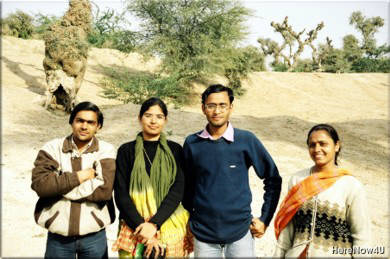
Dujar Team members (L to R): Ramprakash, Krishna Shekhawat, Deepak Kharbanda and Asha Sané

Khejri trees (Prosopis cineraria) at Dujar
The Khejri trees are a commonplace all over this area and an important source of nourishment for cattle and goats, as well as of fuel for home fires.
I feel indebted to Prof. Singh and Prof. Pratihba for making possible this first hand experience and also to the students who were so friendly towards us and eager to know about our western customs. The bus rides were an excellent opportunity to change impressions about our cultures and experiences.